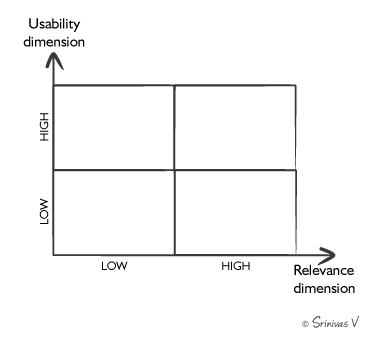I
The notion of ‘mental models’ refers to the structures of thought which are embedded in the consciousness of an individual.
These structures of thought are both static and dynamic in nature. i.e. they are rigid and can also have internal rules that allow them to be flexible within a specified boundary.
One of the most powerful paradigms that has touched modern business life is the recognition that these mental models can and do shape our perceptions, behavior, responses, and actions – both at an individual/ small group level and at an organizational/ community level.
Mental models are of various kinds. Attempts to classify mental models suggest that they can be classified on form, structure, or function.
The critical feature that defines a mental model remains, across all classifications, its ability to boundarize thought and therefore explicitate the output of a reasoning process in a tangible and scalable form.
II
Q: How can we leverage the concept of mental models such that it can be transformed from a useful ‘way to look at things’ to becoming a practical, day-to-day tool for ‘doing things better’, and even more importantly learning to do things better in modern work life?
The answer to the question is derived by classifying mental models into four categories.
If mental models are not usable on a day-to-day basis, then there is a dichotomy between ‘models as held’ and ‘models as used’.
For example, the mental model ‘we must create value’, if not translated in concrete terms into a day-to-day interactional choice, becomes a model that is probably relevant but not usable.
Similarly mental models could be in conflict because their ‘relevance’ is seen differently in different situations.
For example, our conceptions of ‘fair value’ are highly context driven and therefore are tagged differently for relevance in different contexts.
When models are both highly usable and highly relevant, they become effective. They have the power to transform and the power to alter the outcomes of a given situation.
III
However all ‘effective models’ are not necessarily those that make us reach our own goals or translate our own aspirations into reality in an effective manner.
Some such models may, on the contrary, stop us from being effective in the way we work.
For example, a cynic’s effective mental model – “all this will not work”, in relation to a new initiative means that the cynic’s capacity to be effective as part of a social enterprise is severely hampered by his own mental models.
This offers us the possibility of classifying mental models in a new way.
‘Enabling models’ are classified on the basis of the ‘degree of freedom’ they confer on the person who uses or works through them.
The lowest degree of freedom is offered by the class of enabling models called ‘response heuristics’.
Response heuristics are of two kinds:
- Context specific rules
- Generic logical/ casual relationships
The second degree of freedom is offered by ‘analytic-discovery models’.
These models enable us to group/ characterize data and situations on various attributes and dimensions.
They help us not only act in context, but also perceive the scope of that context well.
The third degree of freedom is offered by ‘decision and choice models’.
True decision and choice models are predicated on our capacity to willingly act on assumptions. Good decision and choice models enable us to ‘make calls’ on the future and act on that call.
In short, they help us change or migrate our context.
The fourth degree of freedom is offered by ‘dynamic contexting models’.
These are models that help us navigate across contexts.
Not only are they free of context, but also give us the ability to migrate and apply models developed within one context (which has one set of usability and relevance rules) to another context (with a new set of usability and relevance rules).
The fifth and highest degree of freedom is offered by ‘frame of reference models’.
These are models that are ‘born’ of our deepest choices as human beings, our innermost aspirations, and most important are the deepest structures within the identities that enable us to act in various situations.
Frames of reference are canvases in which numerous models that are more specific, can be developed and evolved, all the while remaining in the backdrop, guiding the interactions of the models within.
IV
In short, this method of classification of enabling models helps us focus our attention on only those mental models which are:
- usable,
- capable of being relevant,
- with clear relationship to effectiveness in the external world, and
- distinguishable in terms of the freedom they give us while engaging with the world.



